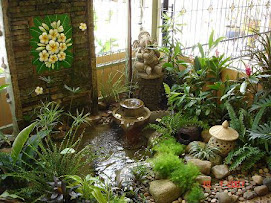Organic Gardening - A Speech for Teachers
By Anna Hart
Organic Gardening Speech
How selfish are you? On a scale of 1 to 10, 10 being the highest, how selfish would you rate yourself? If you are the least bit selfish, you might be interested in organic gardening.
An organic gardening speech might seem more appropriate coming from a Home Economics teacher, but I am just selfish enough that I love organic gardening. I want to share that love with you and with your children.
Imagine
I want you to come with me, in imagination, to a time and place before the Industrial Revolution. The year is 1707. It is late summer. We find ourselves walking the streets of a small town. Houses are spaced well apart for privacy. Land stretches out behind each house. As we look, we notice that much of that land is taken up by gardens. Here and there, we see both adults and children actively engaged in gardening. The plants are beautiful.
You call to one of the adults and ask what they use to make the garden so lush. A broad smile breaks, and through the smile come the words, "Feed the soil, and the soil will feed the plants."
You shake your head. Poor people. Too bad they don't know about that miracle combination of chemicals you saw advertised on TV last week. That's the easy way to grow spectacular plants!
Dinner
The organic gardener invites us to join them for the evening meal, and we accept. At dinner, we join in the prayer of thanks, and then watch in amazement as the children, one after another, begin eating fresh vegetables.
You yourself are not that fond of vegetables, but you politely take a small serving of each. You bite into a leaf of steamed cabbage, and your eyes open wide in amazement. It is sweet - twice as sweet as the cabbage you buy at your local market! You watch a small child fill his mouth with dark green kale, and shudder. There's a small spoonful of the nasty vegetable on your own plate, and you pick at it, putting a single small leaf in your mouth. Amazing! It, too, is twice as sweet as any kale you ever ate. The same seems true of every vegetable on the table. You decide that if your supermarket vegetables were this good, you would eat a lot more of them.
Our imaginary trip ends at that dinner table, and we return to the present.
Organic Gardening's Benefits
Organic gardening has many benefits. If you are completely selfish, you will want those benefits for yourself. If you are unselfish, you will want those benefits for your family. Let me give you just three of organic gardening's benefits.
1. Taste: Organic gardening has been proven to produce tastier fruits and vegetables. A Hong Kong study measured Brix levels, the percentage of sugar in plant juices, using produce from organic gardening and from non-organic gardening. The results showed that organic gardening produced produce that was 2 to 4 times as sweet as that produced by non-organic gardening. Sweeter fruits and vegetables are tastier, and easier to eat, whether you are a young person or an adult. Organic gardening helps us eat better by providing tastier fruits and vegetables.
2. Nutrition: Organic gardening has also been found to provide nutritionally superior produce. Virginia Worthington, of Johns Hopkins University in Baltimore, compared the composition of vegetables grown simultaneously under different farming conditions. Her work included 41 studies with 1,240 comparisons of 35 vitamins and minerals. Worthington found that organic gardening produced vegetables and fruits that were higher in most minerals and vitamins than those from non-organic gardening. Not only that, organic gardening produce was lower in potentially harmful nitrates, which result from nitrogen fertilizers. Dr. Worthington concluded that produce from organic gardening is nutritionally superior. You and your family will enjoy better health with fruits and vegetables from organic gardening. (Effect of Agricultural Methods on Nutritional Quality: A Comparison of Organic with Conventional Crops, Virginia Worthington MS, ScD, CNS, Johns Hopkins University, Baltimore, 1998, Alternative Therapies, Volume 4, 1998, pages 58-69)
3. Exercise: Finally, organic gardening offers you and your children regular daily exercise in the outdoors. Organic gardening helps you build muscles, especially important core muscles. Organic gardening gets you into the sunlight where you can absorb essential vitamin D. Organic gardening is a great stress management tool. Organic gardening gives you an outlet for creativity. It provides satisfaction as you see your work produce useful fruits, herbs, and vegetables.
We could talk about the aesthetic pleasures of organic gardening - how beautiful that garden might become. We could talk about how you can save money with organic gardening - growing your produce instead of purchasing.
Finally, we could talk about how important it is for our children to learn about organic gardening, to embrace it as the way to better health, and to practice it with school, home, and community gardens.
An organic gardening speech could go on for hours, but I'm going to stop here, hoping that I have whetted your appetite enough that you will seek out more information on organic gardening.
Helpful Tip for Speech-givers
A few large bowls of beautiful organic produce can be set on the platform or around the room to help visual learners picture organic gardening.


